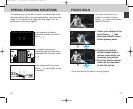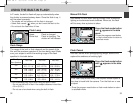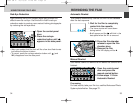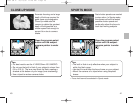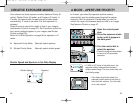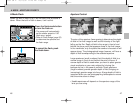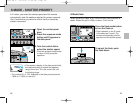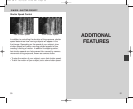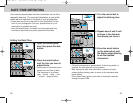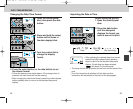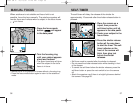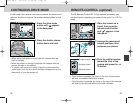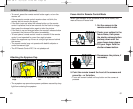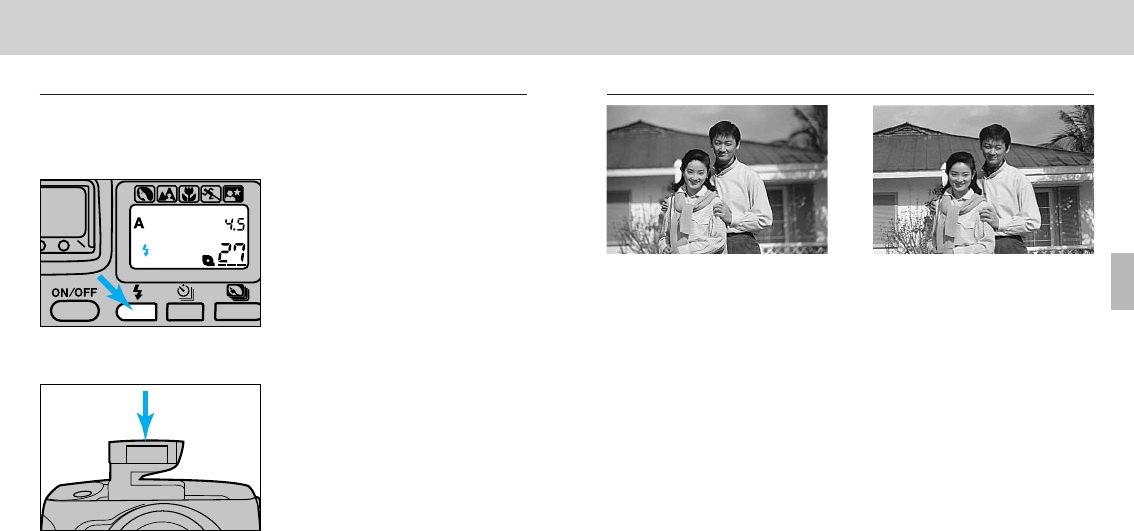
47
A MODE - APERTURE PRIORITY
46
A Mode Flash
When the built-in flash is up, it will fire each time a picture is
taken. When the built-in flash is down, it will not fire.
Press the flash-mode button
to turn the flash on.
• The camera will automatically
set the shutter speed to 1/90
(flash sync. speed).
• Refer to Flash Range (page 32)
to determine the aperture and
the flash range.
To cancel the flash, push
the flash down.
Aperture Control
The size of the aperture (lens opening) determines the depth-
of-field in the final image as well as the intensity of the light
falling on the film. Depth-of-field is the range in front of and
behind the focus point that appears sharp in the final image.
In the viewfinder, only the plane the camera is focused on will
appear sharp. The photographed image however, will have a
depth-of-field corresponding to the selected aperture.
Large apertures (small numbers) limit the depth of field to a
narrow range in front of and behind the point of focus. A
narrow depth of field is used when you want to place greater
visual emphasis on your main subject by blurring the
background, as in the case of portraits. Small apertures
(large numbers) provide greater depth of field, bringing an
increasingly greater range into focus. A large depth of field is
important when you are photographing landscapes to ensure
that the entire scene is sharp.
• Usable apertures will depend on the aperture range of the
lens you are using.
Large Aperture Small Aperture
2102 OM E 16/10/97 11:29 AM Page 46



